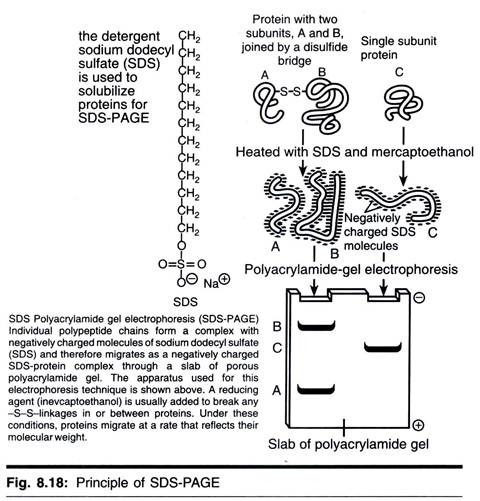In this article we will discuss about the definition of mesosomes.
Mesosomes are the invaginated structures formed by the localized infoldings of the plasma membrane. The invaginated structures comprise of vesicles, tubules of lamellar whorls (Fig.4.15).
Generally mesosomes are found in association with nuclear area or near the site of cell division. They are absent in eukaryotes. The lamellae are formed by flat vesicles when arranged parallely. Some of the lamellae are connected to the cell membrane. The lamellar whorl can be observed in Nitrobacter, Nitro monas and Nitrococcus.
The vesicles are formed probably by invagination and tubular accretion of the plasma membrane. The structure of vesicle becomes interrupted due to constriction at equal distance. The constriction does not cause the complete separation of tubules. Closely packed spherical vesicles are seen in Chromatium and Rhodospirillum rubrum.
In some purple bacteria the vesicular bodies are flattened and stacked into the regular plates like thylakoids. Salton and Owen (1976) have suggested that the mesosomes are formed due to vesicularization of outer half of the lipid bilayer.
However, they are the special cell membrane components, the proteins of which differ from the cell membrane. The exact structure and function of mesosomes are not known. However, it has been suggested that these are artifacts (i.e. a structure that appears in microscopic preparations due to the method of preparation).
Moreover, mesosomes are supposed to take part in respiration but they are not analogous to mitochondria because they lack outer membrane. Respiratory enzymes have been found to be present in cell membrane.
In the vesicle of mesosomes the respiratory enzymes and the components of electron transport such as ATPase, dehydrogenase, cytochrome are either absent or present in low amount. This emphasizes their inability to carryout transport process in which the membrane is energised. In addition, mesosomes are supposed as a site for synthesis of some of wall membranes.
Mesosomes might play a role in reproduction also. During binary fission a cross wall is formed resulting in formation of two cells. Mesosomes begin the formation of septum and attach bacterial DNA to the cell membrane. It separates the bacterial DNA into each daughter cell. In addition, the infoldings of mesosomes increase the surface area of plasma membrane that in turn increases the absorption of nutrients.

